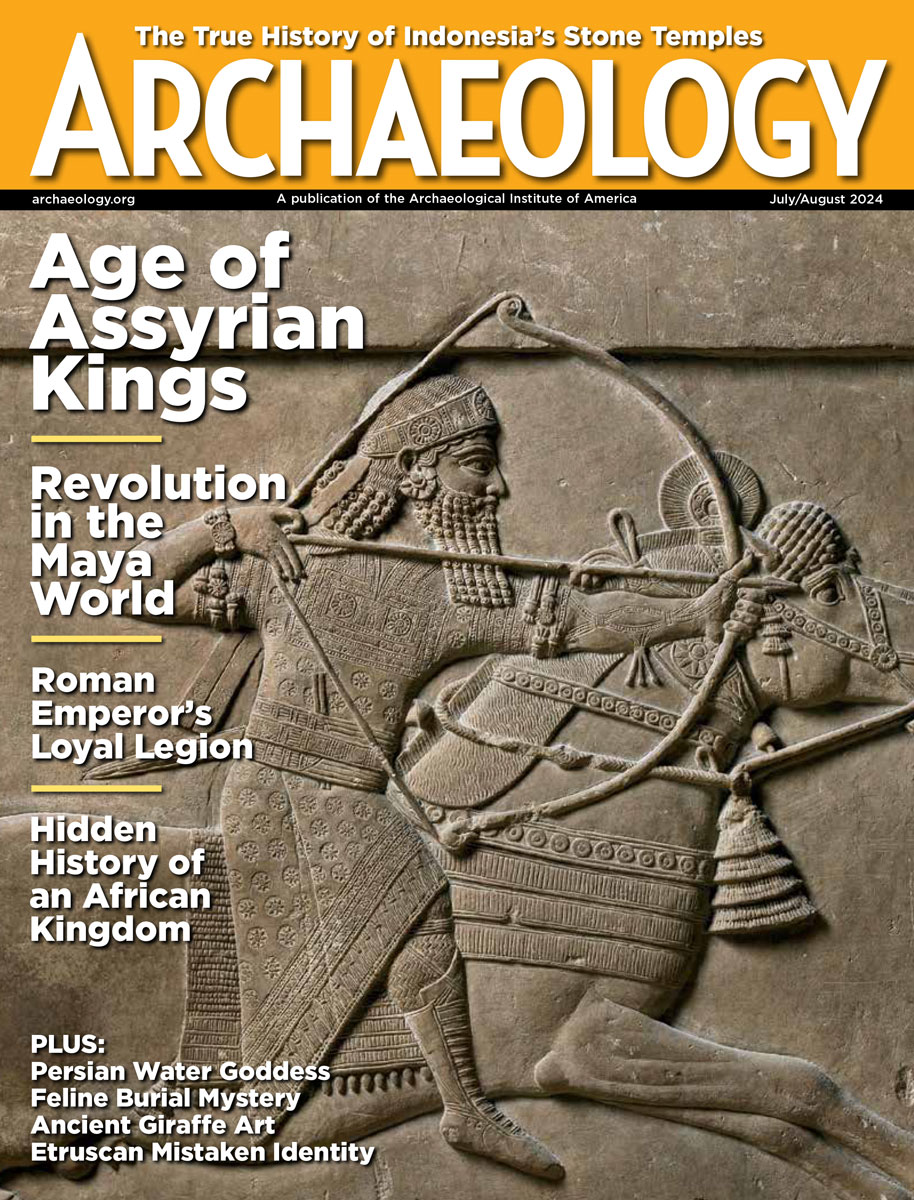Monday, January 19
January 19, 2009
A hoard of 824 gold coins, dating from 40 B.C. to 15 A.D., was discovered by a metal-detecting enthusiast in Suffolk, England, who reported the find to the county archaeological service. It is the largest collection of Iron Age gold coins found in Britain since 1849.
Egypt has asked for the return of more than 200 artifacts taken by a Swedish collector in the 1920s. The artifacts are now in the restaurant at the Ostergotlands Museum. Â
Archaeologists have found a stone adze at the Wairau Bar in New Zealand, at the site of a 700-year-old Maori building. Â
Excavations at the Duong Long tower complex in southern Vietnam have revealed Cham tower bases decorated with carved figures, their foundations, and a brick altar at the center of the complex with a square yoni sculpture, suggesting it was a Hindu temple.Â
The “extremely historic” Marquez Family Cemetery in California’s Santa Monica Canyon could soon open to the public.  Â
Cory Holliday, a cave specialist for The Nature Conservancy, spotted “a dancing stick figure” painted on the roof of a rock shelter in Tennessee’s Cumberland Plateau. The image is thought to date between 1000 and 1600 A.D. “It is a remarkable figure,” he said. Â
Seventeen cave dwellings on the edge of a cliff, near the banks of the Jing River, are being excavated by Chinese archaeologists. They have uncovered pottery and nearby kilns dating to 5,500 years ago. Â
A cave in Sri Lanka has yielded bone and stone tools, pottery, seeds, snail shells, human skull fragments colored with red ochre, and an ornament made from a shark’s tooth. “We may have identified a new cultural phase,” explained Arjuna Thantilage, an archaeochemist from the Postgraduate Institute of Archaeology of the University of Kelaniya. Â
Scientists from Florence’s Institute and Museum of the History of Science want obtain a DNA sample from the body of seventeenth-century astronomer Galileo Galilei, who suffered from what ophthalmologists have said was an inherited degenerative eye disease. “We could explain certain mistakes that Galileo made,” said Paolo Galluzzi, director of the institute. Â
Bones of as many as five individuals have been found in a vault at the Australian High Commission in Port Moresby. Military material had been found with the remains in Papua New Guinea. An investigation will try to determine how the bones were recovered, and how they ended up in the vault. Â
BBC News has a diagram illustrating the siege of the Roman city of Dura by the Persians in the third century A.D. Simon James of the University of Leicester has suggested that the Persians used chemical warfare in the attack after examining artifacts and excavation records from the early twentieth century. Â
Druids are continuing to demand that prehistoric skeletons housed in British museums be handed over for burial.
- Comments Off on Monday, January 19









